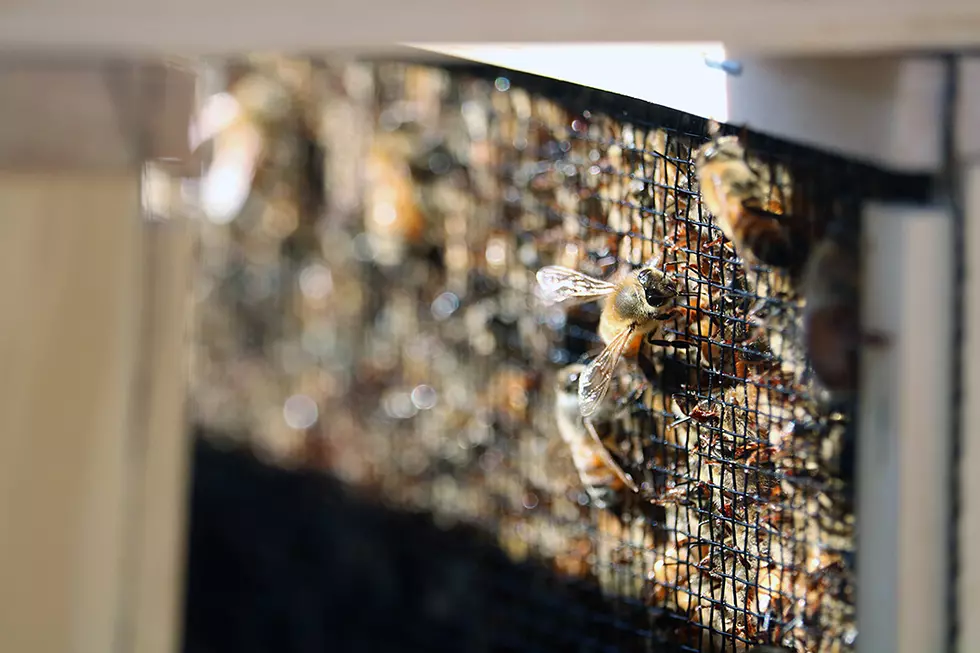
Missoula pollinator conservation plan to protect, promote forage for bees, butterflies
Martin Kidston/Missoula Current
With urban turf and ornamental landscapes among the fastest growing ecosystems on the planet, a new effort funded by the Lolo National Forest and spearheaded by Missoula County will turn an eye to the needs of the region's native pollinators.
A $25,000 grant from the Forest Service to the local Weed District will support the planning and eventual launch of a new Missoula County Pollinator Conservation plan. The goal is to identify the region's native pollinators and improve the habitat they rely upon – and do so in the easiest of places.
“It's a plan we're taking on to protect pollinators and to showcase how we can monitor the success of invasive species management by monitoring beneficial insects,” said Bryce Christiaens, the manager of the county's Weed District. “We're moving forward with the promotion of flowering pollinator landscapes. You need flowering plants in those landscapes to benefit pollinators.”
The plan runs alongside a growing conservation initiative known as “No mow May,” which looks to allow grass to grow in the fertile spring month to create habitat and forage for early season pollinators.
The county is working with Westland Seed to develop a specific seed mixture that can be added to Missoula's vast network of turf landscapes to provide flowering plants for pollinator forage. Christiaens said the effort will include around 100 seed sets that will be used to develop a map and pollinator corridor throughout Missoula.
“These are low growing plants that would provide forage and habitat at the time when our pollinators are most active, which is May and June,” Christiaens said. “Our native pollinators are doing well, but they could be doing better in our urban landscapes.”
Marirose Kuhlman, habitat coordinator, said a recent inventory found that Missoula County is home to more than 230 species of native bees, or roughly 35% of all bee species ever documented in Montana.
But Missoula County is rapidly changing, she said, and the pollinators need consideration.
“As our county’s population grows, more land is developed for housing and businesses,” said Kuhlman. “We are seeing heavier impacts in our natural areas from increasing human use, which can lead to additional habitat degradation such as noxious weed invasions. This habitat destruction can lead to pollinator declines, and that’s what we want to avoid.”
Pollinators are vital to the maintenance of a healthy plant community – and to the food system humans and other species rely upon. The Missoula County Pollinator Conservation plan serves as a guiding document to help manage, conserve, improve and monitor pollinator habitats in the county.
Kuhlman said those behind the plan are developing a range of projects, including the Flowering Pollinator Lawn project. It will encourage interested homeowners and businesses to incorporate low-growing flowering plants into their lawns.
“Typical turfgrass lawns are resource-intensive 'ecological wastelands.'” Kuhlman said. “Flowering pollinator lawns have turfgrasses, too, but they intentionally include flowers to support pollinators and reduce resource inputs such as watering, mowing, fertilizing and pesticide use.”
The effort also looks to map pollinator corridors to connect habitats such as natural areas and stream corridors. It's also working on habitat improvement plans with other county and city departments to see where land can be managed to better support pollinators.
“We're exploring the possibility of partnering with local, small-market agricultural producers to build a wildflower seed-strip program based on recent research from Montana State University,” Kuhlman said. “We will be working with federal partners to develop management plans within the county to achieve shared management goals of habitat conservation and pollinator habitat improvement.”
The effort also has paired with state and federal agencies, including the Montana Department of Transportation. The agency will provide its own seed content during revegetation efforts that don't impair visibility along roadways.
One demonstration project is planned along the Highway 93 commuter trail. It will include signs explaining the plants, their value and why the program is important.
“MDT has already agreed to increase the flower content of their seed mixes in the right-of-way in Missoula County to provide more flowering habitat,” said Christiaens. “We're working with all of those agencies to develop similar things that meet their management goals, but also incorporate benefits to pollinators.”
Missoula County is seeking applicants that are willing to gain the needed knowledge and resources and have the yard space and time to establish a 20 x 20 flowering pollinator lawn. Interested individuals or businesses can view program requirements and apply via our website http://www.missoulaeduplace.org/flowering-lawns-project. For more information, contact Marirose Kuhlman via email at mkuhlman@missoulacounty.us or phone at (406) 258-4219.
